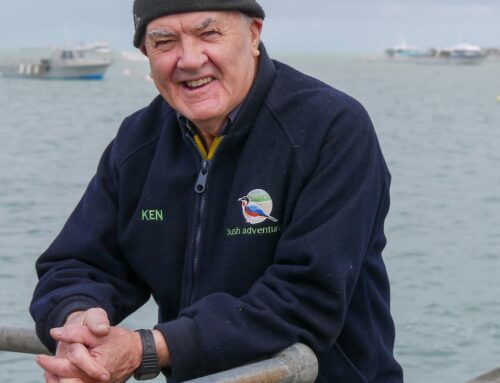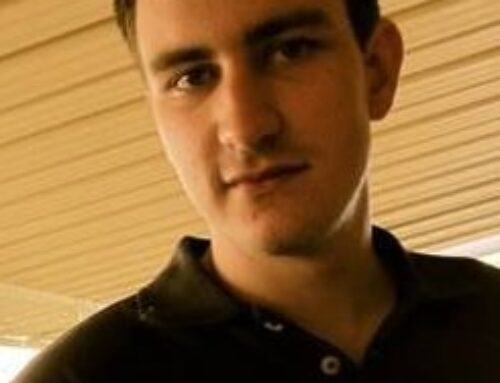In short:
A national study will look at why sea lion populations are falling and provide genome sequencing for the endangered marine mammal for the first time.
Climate change, diet, pathogens, and habitat could be factors as to why some colonies are faring better than others.
What next?
The study will help develop management strategies under the 10-year Threatened Species Action Plan to help the species survive.
What do cat faeces, heavy metals, microplastics, and climate change have to do with cute sea lion pups on remote islands off the South and Western Australian coasts?
They could all potentially be contributing to the population decline of the Australian sea lion, which is listed as endangered with only about 10,000 to 11,000 left in the wild.
Despite changes in fishing and aquaculture techniques that have drastically reduced sea lion bycatch, the number of the marine mammals continues to fall.
A new study, involving universities from around the country, will try to pinpoint what is preventing the species, once decimated by sealing, from recovering to healthy levels.
Simon Goldsworthy, the South Australian Research and Development Institute marine ecosystems program leader, said the study, funded under the 10-year Threatened Species Action Plan, would be the most comprehensive analysis of the species to date.
“Most of the population is here in South Australia with over 85 per cent of it occurring in our coastal waters in populations that have declined by more than 60 per cent over the past 40 years,” Professor Goldsworthy said.
Researchers have been left scratching their heads as to why this top-order predator continues to decline at some sites while at others — sometimes only 10 kilometres away — the animals are showing signs of recovery.
“We’re really trying to better understand what other factors, other risks out there, could be driving this uneven response we’re seeing across populations and across their range,” Professor Goldsworthy said.
“We will be going out to those populations over the next 18 months during the breeding season and taking a number of samples from pups.
“This will include small tissue samples we’ll be using to better understand genetic population structure, samples from faeces, and mouth swabs to understand exposure to disease and pathogens.
“We’re also collecting scats and whiskers to do studies on the prey DNA in scats but also stable isotope analysis using the whiskers to understand the feeding ecology of the species a bit more.”
Professor Goldsworthy said researchers hoped to uncover the factors common to populations that are recovering and to those that are declining.
“This information will be really important [in] trying to improve our understanding of threats to the species at the moment, and will really drive management actions,” he said.
As well as the institute’s scientists, researchers from Macquarie University, the University of Sydney, the University of Western Australia, the Minderoo Foundation, and the South Australian Department for Environment and Water will also be involved in the study.
The cat factor
The possible impact of toxoplasmosis parasites — found in cat faeces and known to affect reproductive rates in sheep — will be investigated, as the parasite is “fairly widespread in a lot of marine organisms”.
“There is some concern that the presence of toxoplasmosis in sea lions might be impacting their reproductive rates,” Professor Goldsworthy said.
“We have very little understanding of that at this point.”
The researchers will also look at pollutants that could be affecting the sea lions’ health.
“As top predators in the marine ecosystem, they bioaccumulate a lot of these heavy metals and pollutants like PFAS [man-made chemicals perfluoroalkyl and polyfluoroalkyl substances] that are really ubiquitous now in our environment,” Professor Goldsworthy said.
“Concentrations of these pollutants may also impact the health and wellbeing of the species.”
Blood sampling will provide the first whole genome sequences undertaken for the species.
Professor Goldsworthy said this would determine if tens of thousands of years of isolation had created any subspecies in the three major isolated populations of sea lions in Australia — on the south coast of WA, the west coast of WA, and the South Australian coast.
“This is pretty exciting — there’s limited genetic information available on Australian sea lions,” he said.
Climate impact
A third part of the project will use data from 13 consecutive breeding seasons at Seal Bay, on Kangaroo Island, to assess the impact of extreme heat events that are becoming more prevalent with climate change.
“There’s quite a strong correlation … in the mortality of pups, and the number of hot weather days, and temperatures above 35 degrees within each of those breeding seasons,” Professor Goldsworthy said.
“It looks like when these weather events occur, that we see peaks in pup mortality.”
Professor Goldsworthy said the breeding habitats varied across the range of the species, with little shelter from heat on some of the rockier islands.
Man-made structures, called pup shelters, will be trialled at breeding sites to provide refuge for vulnerable pups during extreme weather events.




